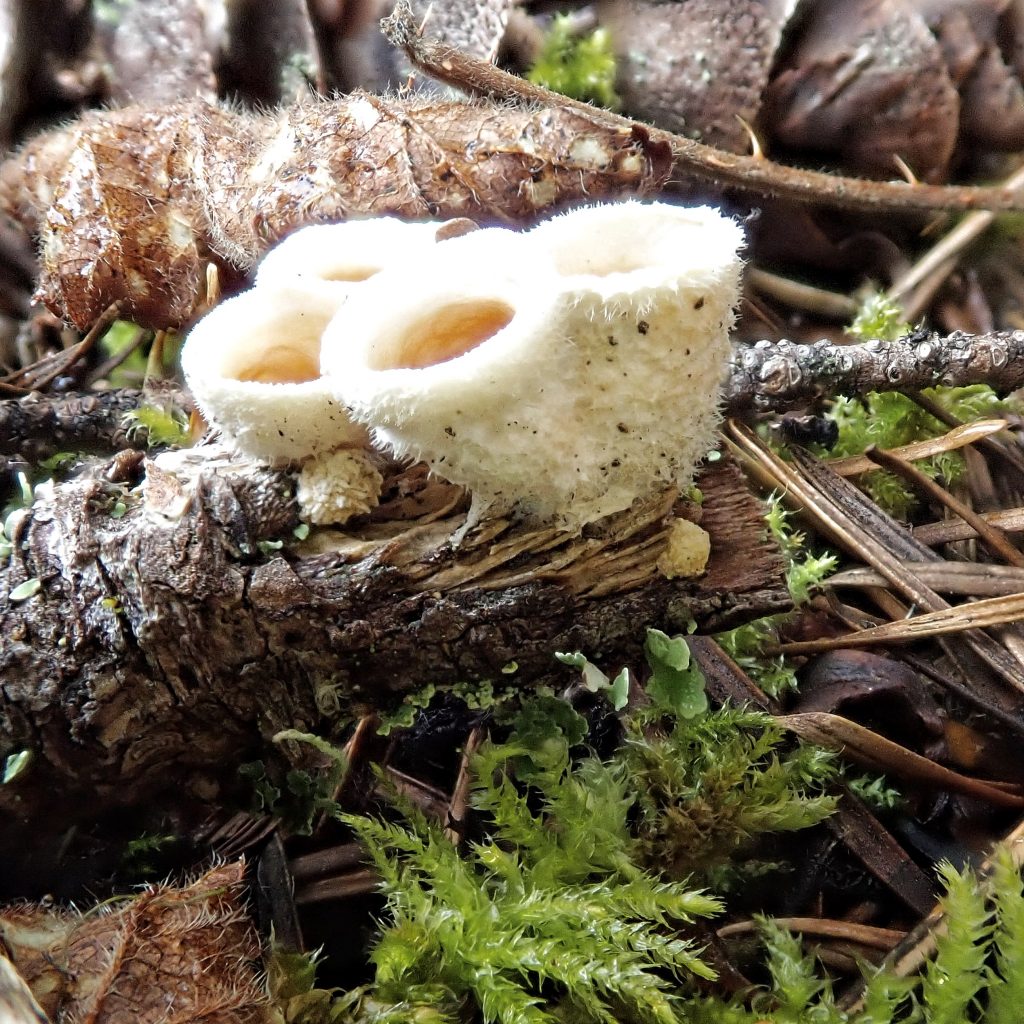
I love finding bird’s nest fungi, but this is only the second species I have attempted to identify. They are very satisfying to look at, not so much pretty as just sensible, the splash cups (there is a nice article on splash cups here, along with some video on how they work) perfectly crafted, in this rainy country, for their purpose of spore dispersal.
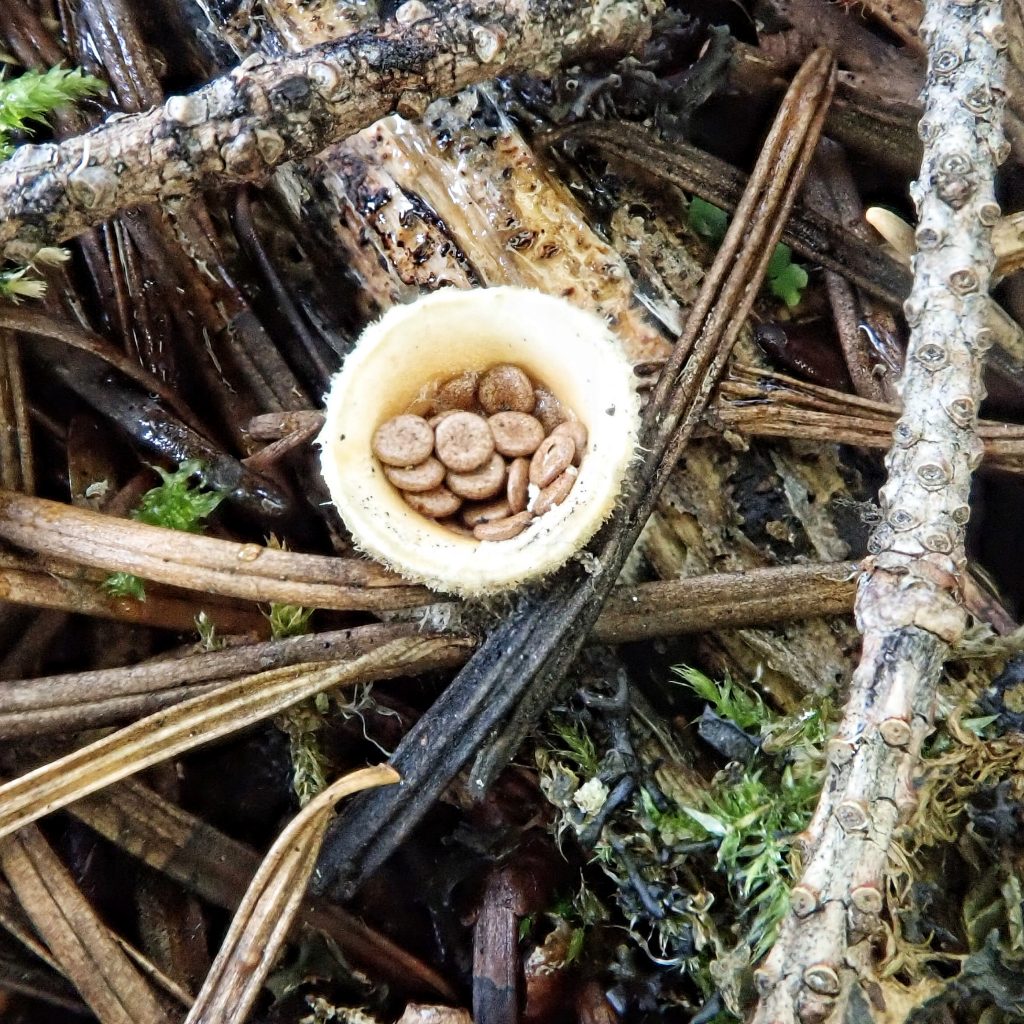
They weren’t as straightforward to identify as Cyathus striatus (where I write in more depth about the funicular structure) was, despite the fact that my initial picture identification was correct. That is because I had to rule out the presence of a funiculus and funicular cord (a tiny purse filled with a sticky cord), which required some microscope work viewing the ventral side of a peridiole (the ‘egg’ in the ‘nest’).
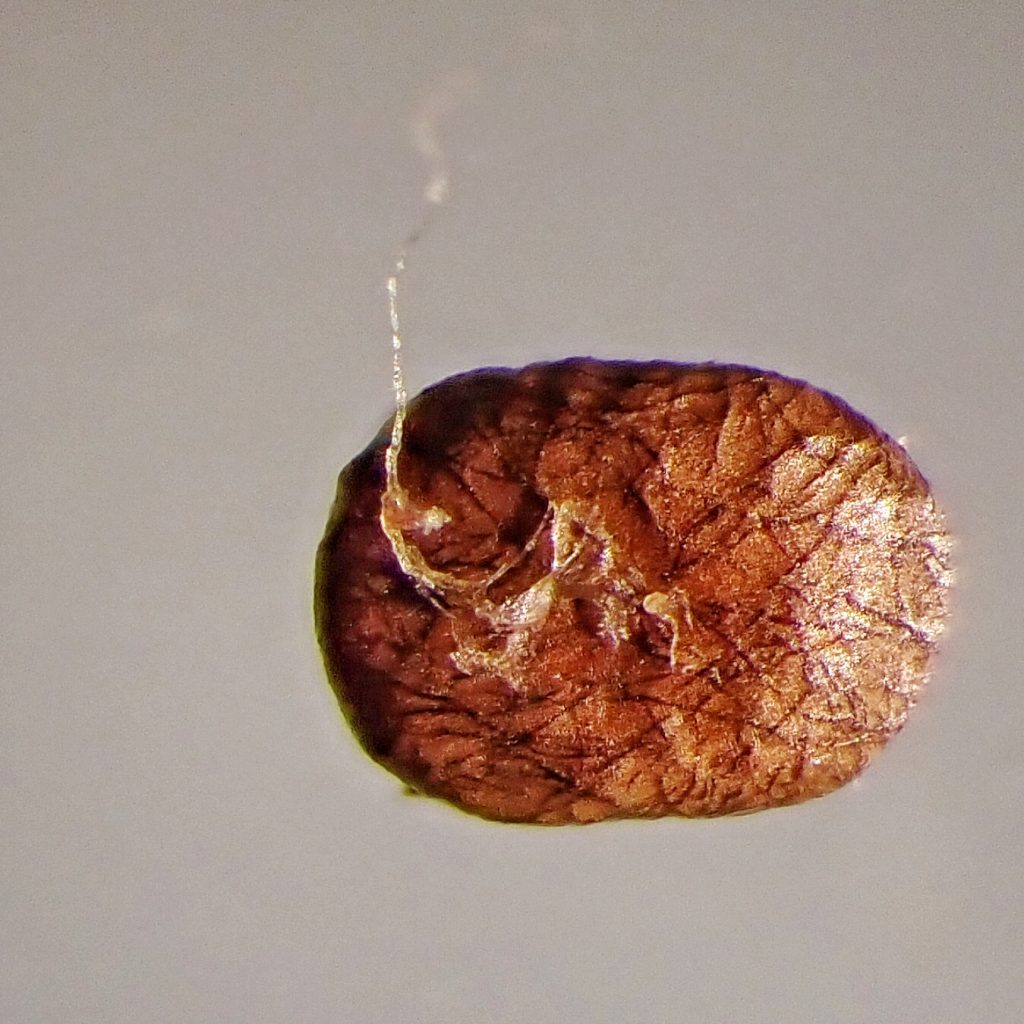
Where I found that there was a sort of hair extending from the peridiole. It turned out to be surprisingly difficult to ascertain for certain that that wasn’t a funicular cord, but finally I found actual photos, rather than ‘artist’s renderings’, of the funicular structure of Cyathus and Crucibulum, which showed them to be unmistakably bulkier than what I found on my specimen.
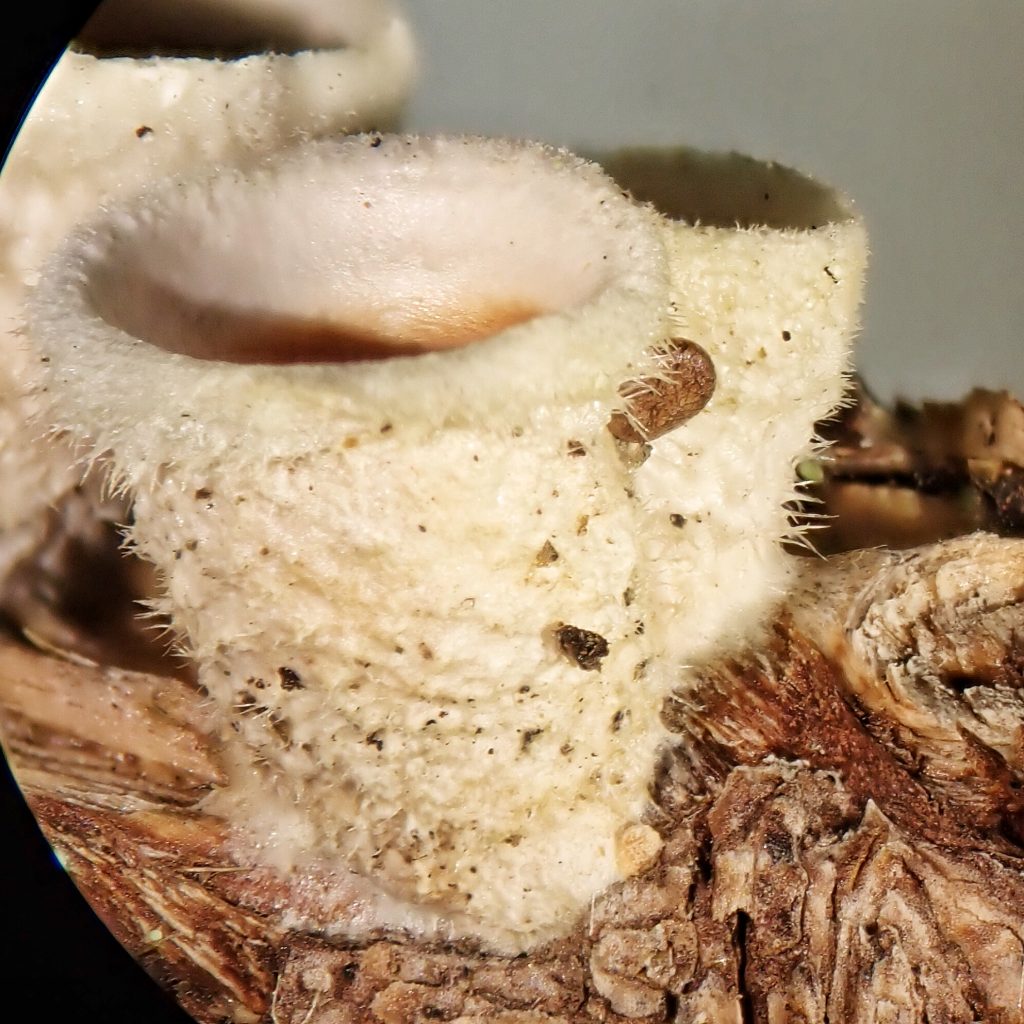
In the process I also found photos of the peridioles of Nidula niveotomentosa, which had the same hairlike projection. I’ve come to the (probably mistaken) conclusion that it is some of the mucilaginous gel that the peridioles are immersed in, which has been pulled out to a point. But, really, I have no idea because nowhere did I find any mention of it.
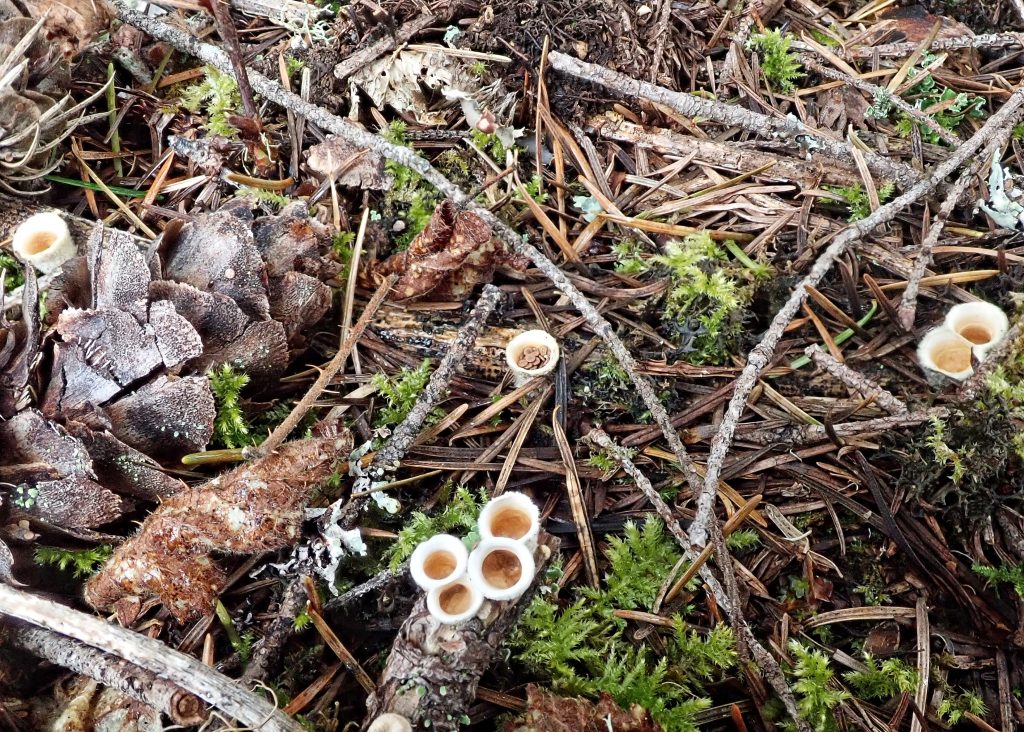
This has become a common problem for me in writing these posts. There is a gap between information written by experts, who seem to assume only experts want to know what species they are looking at, and information written by lay people who seem to assume that other lay people will be satisfied to say ‘Well it might be…’. One of my missions in writing these profiles has been to bridge that gap, which is why I natter on so incessantly about my identification process.
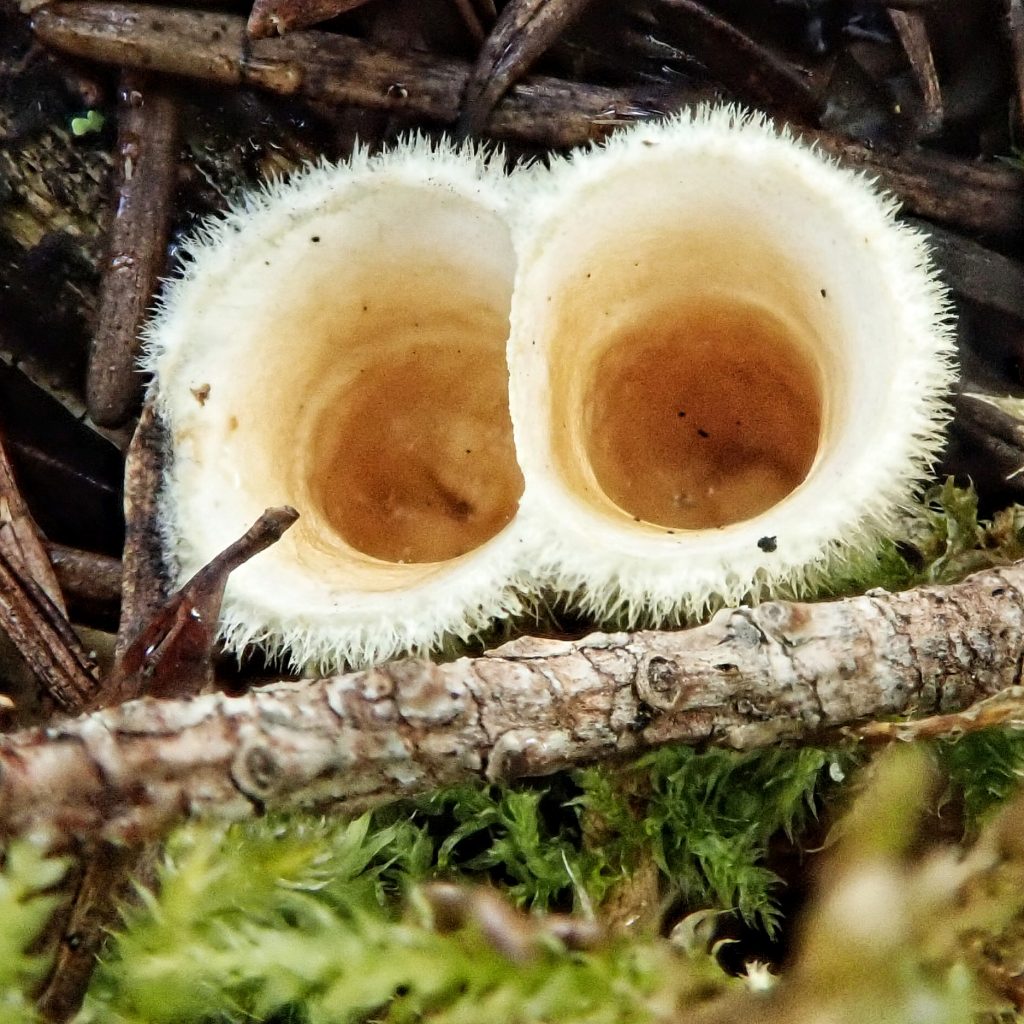
Like all bird’s nest fungi Nidula niveotomentosa is a saprophyte, feeding on and promoting the decaying process of dead organic matter, and hastening the return of those nutrients and minerals to the soil. As such they perform a vital function in our forests, since fungal saprophytes are the only organisms that can decompose dead wood.
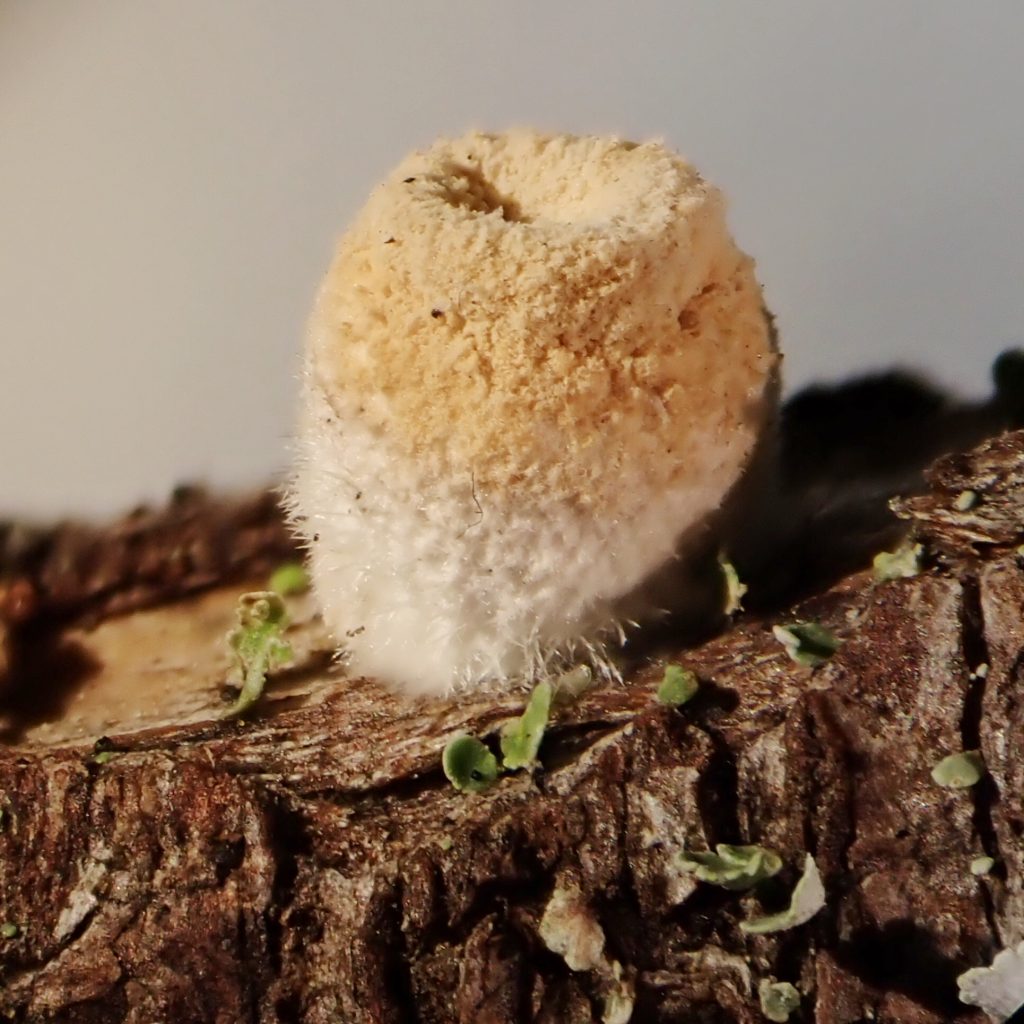
Description– Hairy to shaggy, white to buff, cylindrical cups (peridia), 4-7 mm tall, 4-6 mm wide, with a khaki lid when immature; peridioles brown, .5-1mm in diameter, lacking a funiculus, immersed in gel.
Similar species– N. candida is larger, greyer/browner, and more urn-shaped; Cyathus and Crucibulum spp. have a funiculus attaching the peridioles to the cup.
Habitat– Found on sticks, logs, and other woody debris, in moist to mesic forests, up to subalpine elevations.
Range-Spotty worldwide distribution; most common west of the Cascades in our region, and also found in ne Washington/n Idaho/ ne Montana; its range is undoubtedly broader than that, but information is limited.
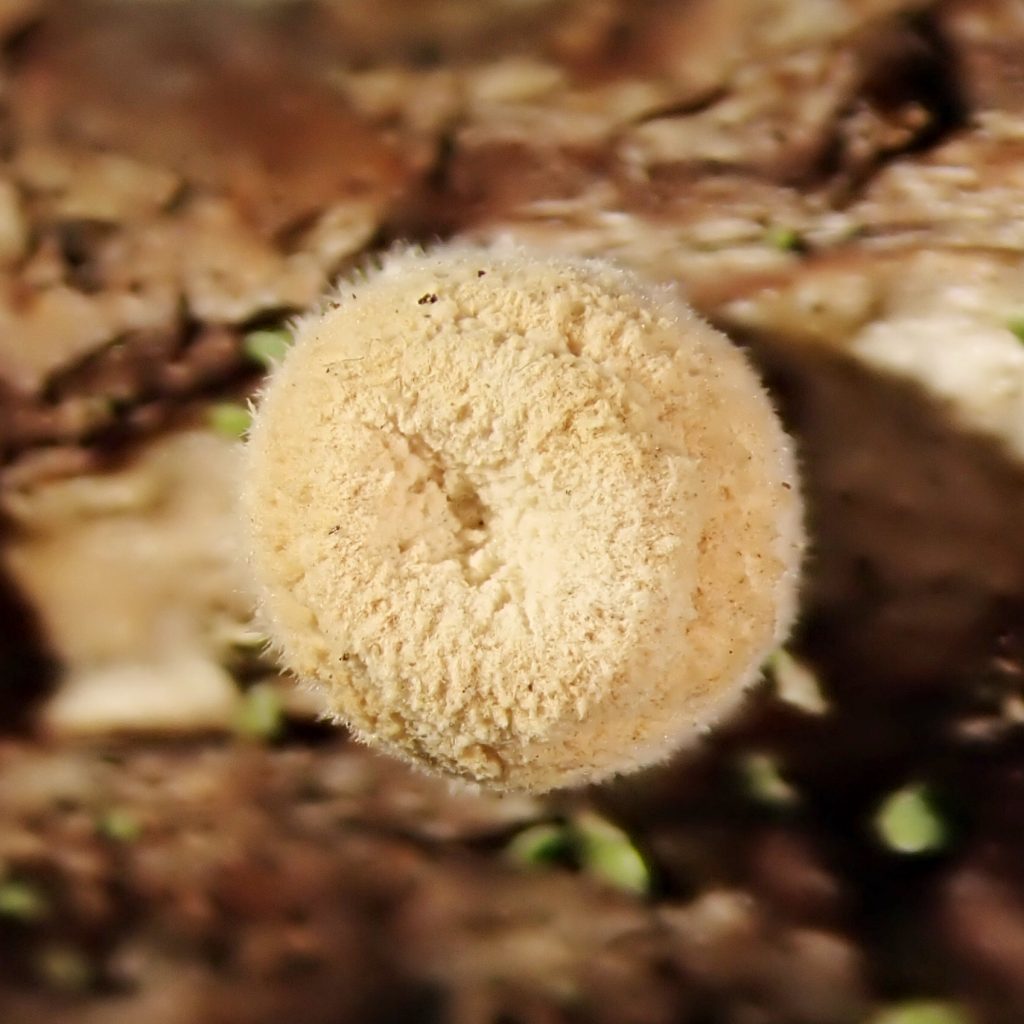
Reproductive timing-Peridiole mature in fall/winter/spring, and cups may persist even longer.
Eaten by– Apparently some slugs, snails, and mice eat the peridioles, and the spores remain viable as they pass through their digestive track, aiding in the dispersal of this species.
Etymology of names– Nidula is from the Latin for ‘little nest’, which references the form of the fruiting bodies of this genus, which are collectively and colloquially called bird’s nest fungi. The specific epithet niveotomentosa is from Latin and means ‘snowy, dense hair’, referring to the outer surface of the cup (peridium).
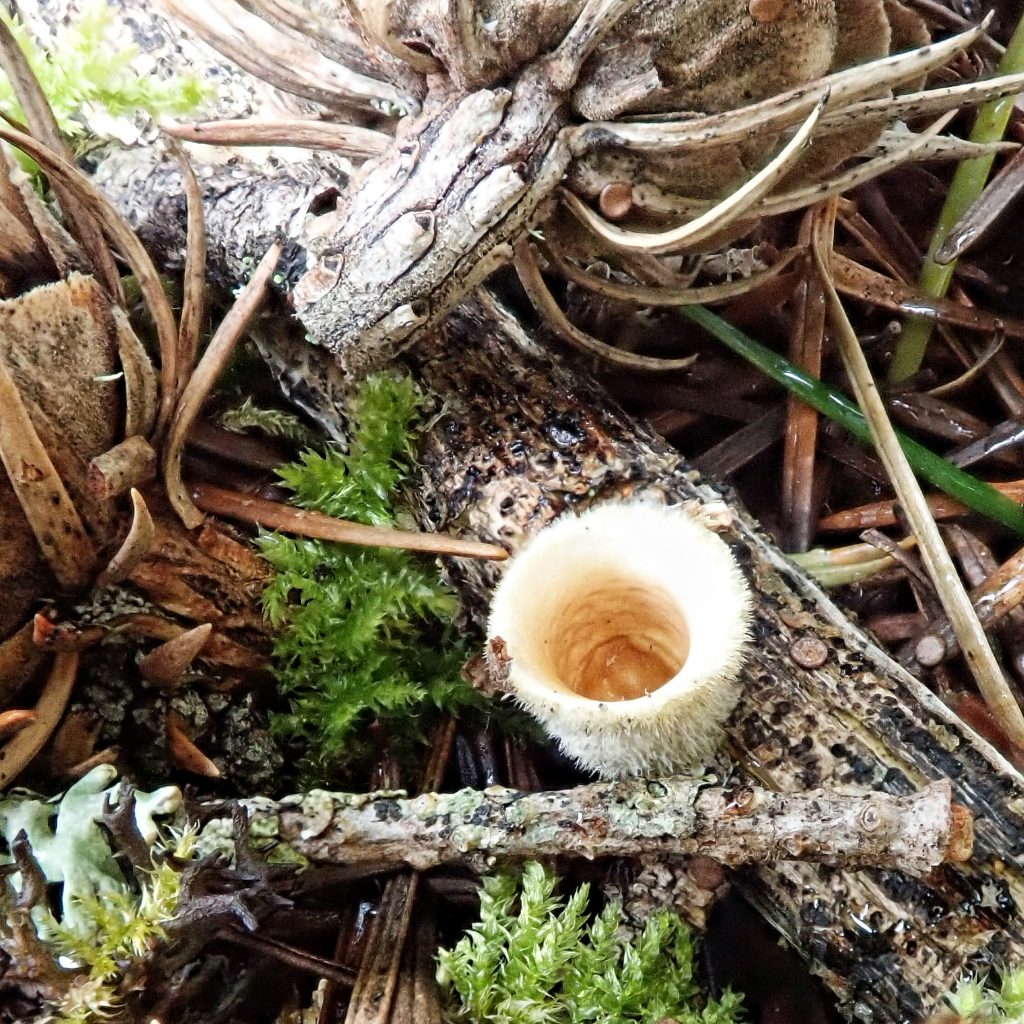
https://www.mykoweb.com/CAF/species/Nidula_niveotomentosa.html
https://365caws.blogspot.com/2020/03/nidula-niveotomentosa.html?m=1
http://www.hiddenforest.co.nz/fungi/family/nidulariaceae/nidul02.htm
http://www.rdrop.com/~half/General/nature/nidula.niveotomentosa.html
https://www.citscihub.nz/Phil_Bendle_Collection:Nidula_niveotomentosa_(Woolly_Bird_Nest)
http://linnet.geog.ubc.ca/Atlas/Atlas.aspx?sciname=Nidula%20niveotomentosa&redblue=Both&lifeform=14
https://www.sciencedirect.com/science/article/pii/S1878614613001165
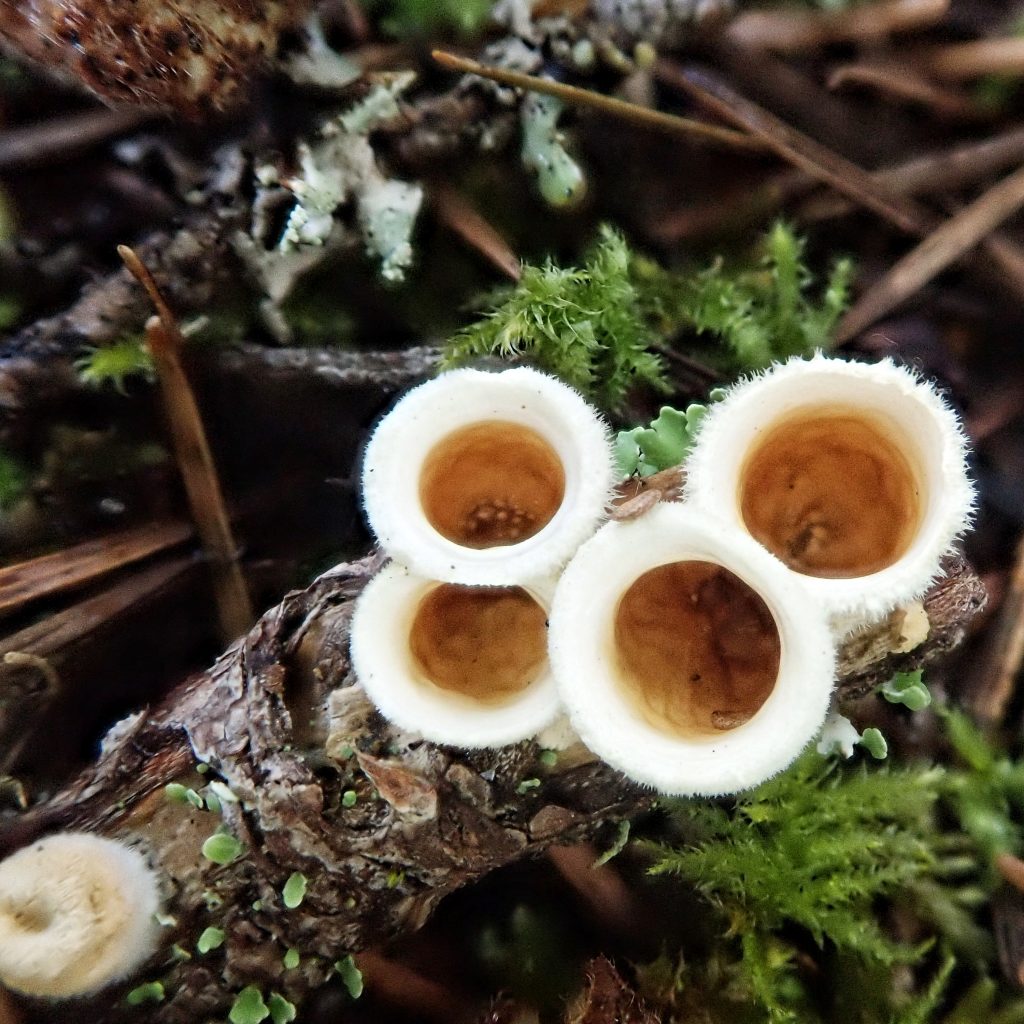
The primary reference for bird’s nest fungi in the PNW is Harold J. Brodie’s Bird’s Nest Fungi (U of Toronto Press, 1975). If you have a university login, you can probably read it free online through JSTOR.
I actually don’t have access, so I just bought it today when I had a hard time finding information 😀 I really wish I had access to dozens, maybe hundreds of papers I’d like to read! But I’ve never been affiliated with any institutions of higher learning.
I love Birds Nest and your blog too!
You might want to check out the Sci-Hub website for free articles. I use it all the time. https://sci-hub.se/
Thanks Diana! I should remember to check it out more often. The times I’ve looked for something there they haven’t had it. Thanks for the appreciation!
I’m certainly no mycologist.
But to me the northwest is defined by mushrooms & salmon.
These are so beautiful AND functional.
Fruiting bodies.
They remind me of coral forms and tidepool critters.
And your blog is so very beautiful AND functional!
Observing reality.
Brilliant
Thank you, Ray!
“Natter on”, it’s all quite fascinating!! Thank you ☺️